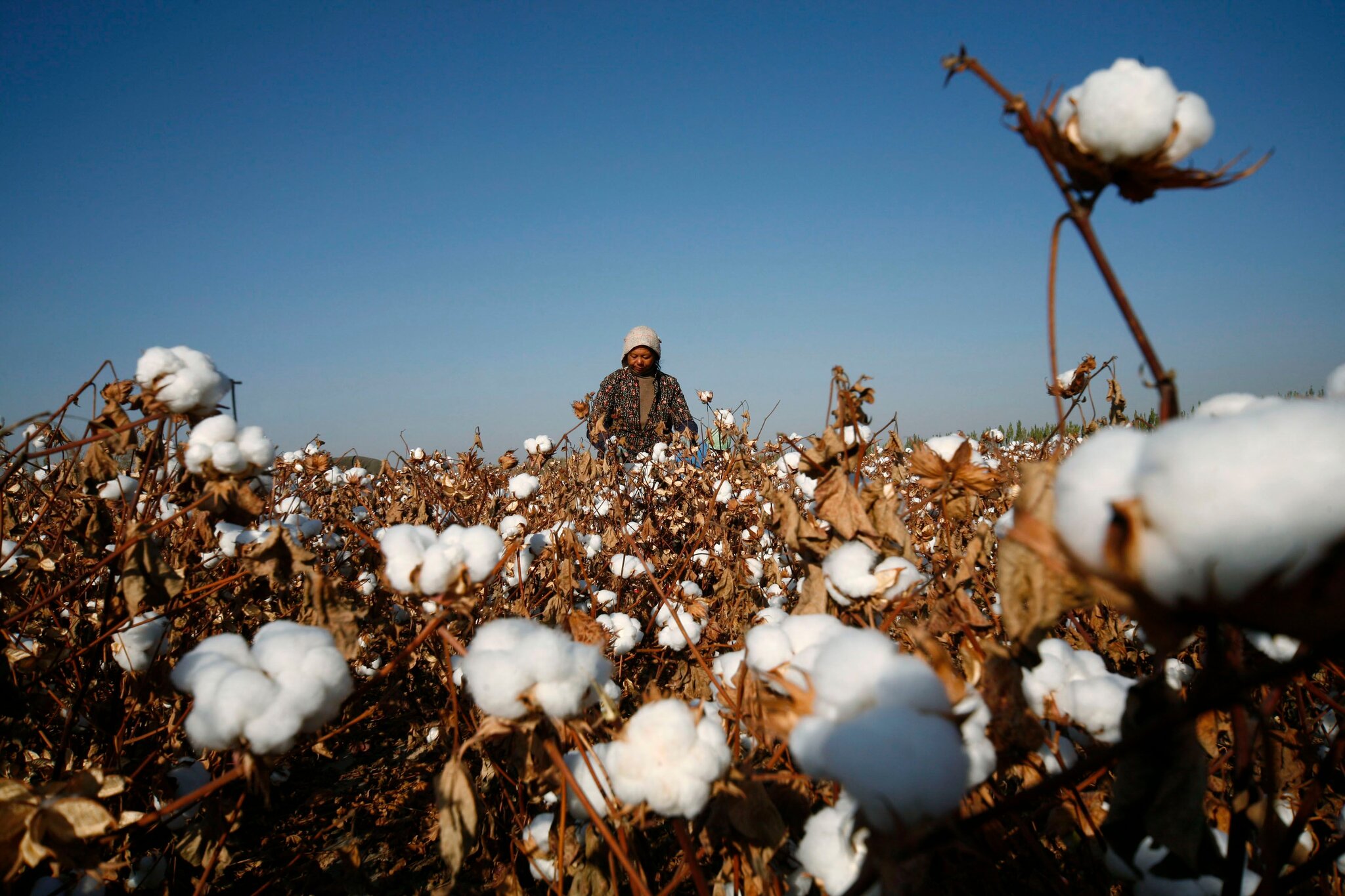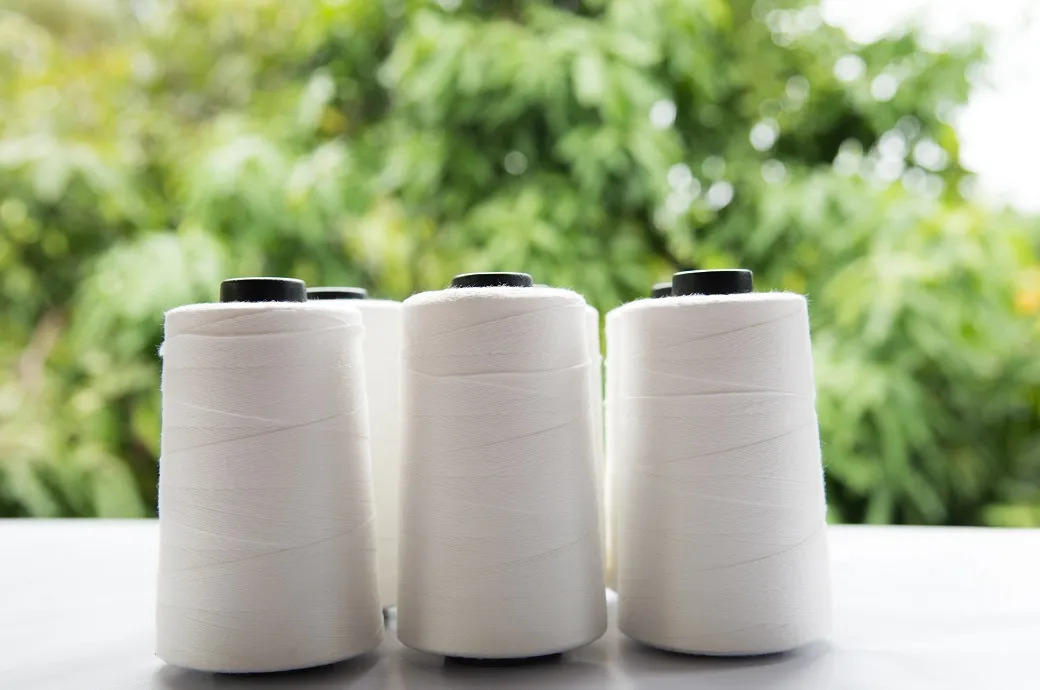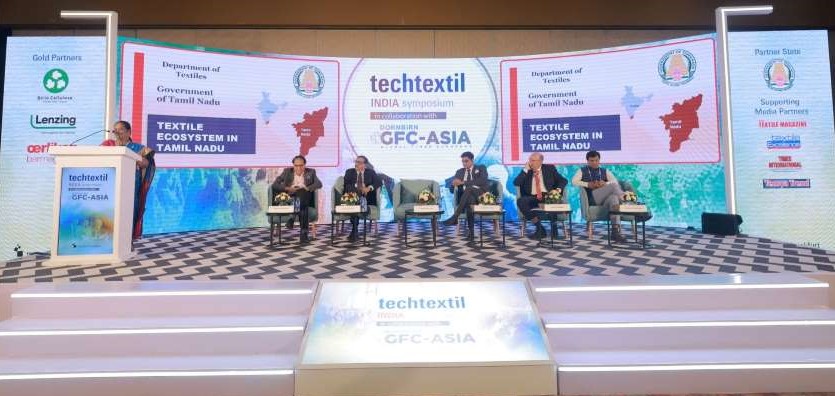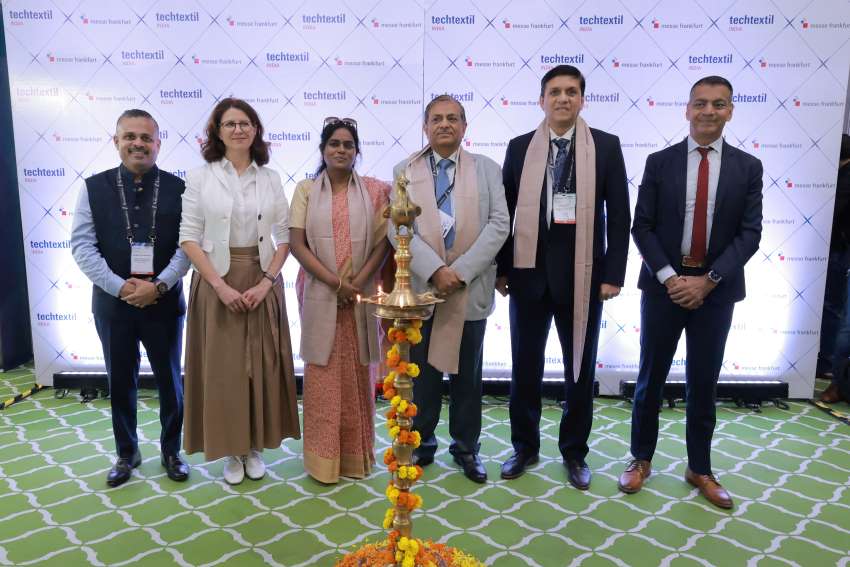FW
The Ministry of Textiles has notified a scheme for Rebate of State Levies on Export of Garments (ROSL). This, first of its kind scheme, has unique features and will apply with 'Let Export Order' dates from September 20 onwards. The Central Board of Excise and Customs (CBEC) has issued a detailed circular, clarifying various aspects of the scheme. It says the claim-cum-declaration of eligibility has to be made by the exporter on drawback exports at item level. The drawback exports (shipping bill or bill of export) may be standalone or in combination with other schemes.
For the EDI (electronic data interchange) shipping bill, selection of the scheme code involving the ROSL scheme at the time of export shall itself amount to making a claim- cum-declaration of eligibility. For the same bill, this shall be the only means to make the claim. If a need for a manual shipping bill arises, only then will the exporter printing the claim-cum-declaration on the shipping bill be accepted. No claim for rebate shall lie except in this manner, informs CBEC.
The scheme seeks to rebate state value added tax or central sales tax on inputs, including packaging and fuel, duty on electricity generation and duties, and charges on purchase of grid power, as accumulated through the stages of production from yarn to finished garments. The ministry has notified the rebate rates for all items covered under Chapters 61 and 62 of the All Industry Rates of drawback. Usually these are between one and two per cent of the FOB value for those availing of the special advance authorisation scheme and between three and four per cent of the FOB value for those claiming duty drawback. The scheme will be valid for three years but the government can change the rebate rates any time.
Since the rebate will be disbursed by the Customs Department along with duty drawback, the scheme is optional. So, the exporter claiming the benefit has to make a suitable declaration to the Customs regarding his eligibility for the rate and rebate, acceptance of the terms and conditions of the ROSL scheme, that he has not claimed and shall not claim the credit or rebate or refund reimbursement of the specific taxes that comprise the rebate of state levies under any other mechanism and also that he has constituted an ICC.
All eyes are on the forthcoming Yarn, Fabric & Accessories Trade Show (YFA) 2016 to be held from November 23 to 26 at NSIC Exhibition Centre, in New Delhi. Exhibitors to the second edition of the show will be eligible to subsidies offered by the National Small Industries Corporation (NSIC). YFA 2016 is being supported by NSIC, and MSME units that participate in the YFA 2016 exhibition can claim subsidy under the Marketing Assistance Scheme (MAS) of NSIC of 60-95 per cent under various categories of MAS.
This year, the YFA will aim to redefine the way fibres, yarns, fabrics and apparel accessories are sourced and bring renowned suppliers from the these four segments closer to buyers and also offer them a one-stop place to source all their requirements. The show will see exhibition space doubling from one hall to two halls in this edition. And good news is that WGSN, the global authority on fashion trends will be the Trend Partner.
There will be a special Chinese Pavilion where around 40 Chinese exhibitors will showcase yarns, fabrics and garment accessories. A special highlight of this YFA show will be the Denim Zone which will see 20 top Indian denim fabric makers exhibiting their denim innovations. The organizers have also arranged a conference in association with TIT-Bhiwani and the Textile Association of India (TAI). Titoba, the alumni meet with a gathering of more than 800 top industry professionals in association with the two organizations is also in the offing.
Vision Communications, the organizer, has also planned fashion shows during the days of the show. Additionally, there will be a high-level conference which will see ministers, top government officials and industry leaders offering their views at the conference.
The fair is being supported by the Northern India Textile Mills Association (NITMA) with Apparel Export Promotion Council (AEPC), Textile Association of India (TA(I)), Power loom Development Export Promotion Council (PDEXCIL ), Clothing Manufacturers Association of India (CMAI), Federation of Hosiery Manufacturers Association (FOHMA), Noida Apparel Export Cluster (NAEC), Northern India Textile Research Institute (NITRA), U.P. Apparel Exporters Association and PTA Users Association as supporting associations.
The fashion industry is hungry for eco-friendly and natural fabrics. Synthetic fabrics have dominated production, but high quality wool is now making a serious comeback. Wool is a natural, sustainable, fire-retardant fiber that’s biodegradable, renewable and recyclable. Fine Merino wool produced on farms is sought after by many Italian fashion labels.
Wool is a protein fiber formed in the skin of sheep, and is thus one hundred per cent natural, not man-made. At the end of its useful life, wool can be returned to the soil, where it decomposes, releasing valuable nutrients into the ground. When a natural wool fiber is disposed of in soil, it takes a very short time to break down, whereas most synthetics are extremely slow to degrade.
Woolmark represents Australia’s finest wool producers and looks to present wool from its Australian producers as a modern fiber both in premium fashion markets and growing markets such as China.
China already buys three-quarters of Australian wool exports, making it a key market for Woolmark. South Korea is an increasingly important market. Now, as China’s economic growth weakens and global consumer spending slows, Woolmark is looking for growth from the sports, technical outerwear and athleisure fashion markets.
Pakistan Textile Exporters Association (PTEA) held its annual elections recently. Ajmal Farooq of Noor Fatima Fabrics was elected chairman of the Association. Other office-bearers were elected unopposed as no nomination papers were filed. Earlier, 12 members were also elected unopposed as Executive Committee members for the next two-year term.
Besides Farooq others elected were Faisal Nisar of NFK Exports elected as senior vice chairman and Muhammad Naeem of Enn Eff Exports elected as vice chairman for the term 2016-17. Speaking after his election, Farooq said chairing the country's apex textile body was an honour as well as a challenge particularly in these testing time. Currently, textile industry was facing many challenges in almost all segments particularly high utilities cost, trade deficit as well as additional levies and other impediments directly affecting the cost of doing business, which has hampered exports of the country. The textile sector will have to deliver to steer the country out of economic troubles. For this, the PTEA would need the cooperation of not only the entire sector but also of value-added associations, he added.
Farooq appealed to the government to chalk out a viable policy on textile. This, he said was required as this sector has the potential to wipe out the entire trade deficit, provided genuine factors impeding its growth are removed. The Annual General meeting of the Association will be held on September 27 and results of the elections will be announced officially while newly elected body will take charge of their offices from October 1.
The judges for this year’s The Woolmark Company Texprint Award have been announced. They are: Aline Galimberti, Chief Designer of Dormeuil and Jonathan Christopher, the 2015-16 European menswear finalist for the International Woolmark Prize. For many years, the Woolmark Company, the global authority on wool has supported Texprint’s prestigious awards with a dedicated prize that recognizes the use of Merino wool incorporated into textile design.
The Woolmark Company Texprint Award is judged and presented at Premiere Vision Designs. This year’s announcement will be made on September 14 at the Texprint village in Hall 5. The judges will meet the 2016 Texprint alumni on their stands at Premiere Vision Designs to view their collections and discuss their use of Merino wool. After joint deliberations they will select the winner of The Woolmark Company Texprint Award.
Aline Galimberti is Chief Designer of Dormeuil, one of the most respected global brands in the textile industry. The firm was founded in 1842 with a reputation for exceptionally high quality research, creativity and innovation.
Netherlands-based Jonathan Christopher has proved to be a major innovator in wool denim. The International Woolmark Prize highlights the most innovative and modern interpretations of Australian wool by leading design talents.
The winner of the Woolmark Company Texprint Award will receive £1,000 plus ongoing support from the Woolmark Company and get opportunities to learn about developments, innovations and the supply chain for wool. In addition, the Woolmark Company will sponsor a dedicated presence for the winner at Intertextile Shanghai.
In order to appeal to Chinese-speaking consumers China, Taiwan and Hong Kong, Japanese clothing companies are increasingly making their way into cyberspace. Right now, Japanese apparel makers have a limited physical presence in those markets. Before opening more bricks-and-mortar shops, they first hope to build a reputation through low-cost virtual outlets.
This month, TSI Holdings is expected to launch an online shop for Chinese consumers to introduce two of its women's clothing lines, Jill by Jillstuart and Jillstuart. The company has the rights to both brands' trademarks in Asia except South Korea. TSI also has plans to open a virtual outlet on Tmall Global, a Chinese virtual shopping mall. Instead of opening its first physical outlet to sell Jill by Jillstuart in China, the company opted to go for online sales first.
In a bid to promote its brands through social media, TSI will also set up an official account on Weibo, the Chinese microblogging site. It currently runs an online shop for its subsidiary nano universe for Taiwanese shoppers. Another company Tokyo Base, which operates Studios shops, launched a cross-border e-commerce site in August to sell goods directly to customers outside Japan. It hopes that the Chinese website will attract customers in Hong Kong and Taiwan.
Tokyo Base is known for its select lineup of branded goods from Japan. Some 20 per cent of sales at its flagship store in Harajuku in central Tokyo come from foreign tourists. Online sales make up over 30 per cent of its overall sales at home. After establishing a reputation online, Tokyo Base will open physical shops in Hong Kong and elsewhere.
In its first attempt to sell goods via the internet to overseas customers, United Arrows set up an online shop for Taiwanese consumers. The company opened its first brick-and-mortar shop in Taiwan in 2013. It now operates three shops through a local subsidiary.
Indore, Madhya Pradesh, is a hub for readymade children’s wear. There are over 3,000 garment manufacturing units and the industry is worth about Rs 1,500 to Rs 1,800 crores. Sales of readymade garments are expected to rise by over 20 per cent this festive season due to a rise in demand from neighboring states and a strong local market.
Anticipation of better crop production due to good rains in the country is expected to enhance the spending capacity of consumers. Local manufacturers are expecting retail counters to witness a big jump in sales from October due to festivals such as Navratri and Diwali. Sales of garments have picked up since Raksha Bandhan and are expected to remain firm until the end of the year due to the series of festivals and weddings. This season orders for women’s wear and men’s wear have also come in from Karnataka, Tamil Nadu, Rajasthan, Gujarat and Maharashtra.
Garment demand is expected to slip a bit during mid-September but is again expected to pick up from October. Indore is the largest city and the commercial center of Madhya Pradesh. Manufacturing of readymade garments is done by very small manufacturers mostly at home.
As weak rains limit yield recovery, cotton production in India will recover slower than thought earlier, say US officials. Yields will grow after a decent monsoon across many areas, but by barely by enough to outweigh the sharp drop in sowings. ‘Despite a generally good monsoon, below normal rains in some cotton-specific growing areas is expected to lead to yields that are lower than the USDA official forecast,’ the Delhi bureau of the Department of Agriculture (USDA) warned. The bureau based in New Delhi saw the country's cotton crop at 26.50 million bales, barely higher than the six-year lows touched last season.
The USDA had forecast that the crop would recover to 27 million bales this year from 26.40 million bales in 2015-16. Cotton plantings in India are forecast to fall to a seven-year low of 11.00 million hectares, down from 11.90 million hectares in 2015-16. ‘Higher input costs and better price realization for competing crops has prompted farmers to move away from cotton and pushed acreage downward from a year ago,’ the bureau informed.
The decline is not universal, as lower plantings in Gujarat and Telagana outweigh higher plantings in Madhya Pradesh and Maharashtra. ‘The area in the state of Telangana has fallen as farmers have opted to plant more area in pulses, maize and paddy,’ the bureau said. Last week the International Cotton Advisory Committee forecast Indian cotton sowings at 11.2 million hectares noting that ‘better prices for competing crops, the late arrival of the monsoon and yield losses from pest pressure last season discouraged farmers’.
The Delhi bureau forecast consumption and imports in line with the official USDA forecasts at 24.0 million bales and 1.0 million bales respectively.
Fair Wear Foundation has published a report ‘Fair Wear Foundation (FWF) India Country Study 2016’. The 56 page report states there is no child labour in the garment industry of the country now as compared to what was in 2000. Similarly there is no discrimination either on the basis of religion or caste. And to top it all, women get equal pay for equal work as men do and get.
The report says that during the FWF audits, evidence of forced and/or bonded labour was difficult to find and is mostly linked to forced overtime though the report also says that there is violation in the area of occupational health and safety. The FWF audit was conducted in apparel manufacturing hubs like Delhi, Noida, Tirupur and Karnataka between 2013 and 2016.
In the North, it was observed that the second most recurrent violation is the lack of internal and formal means of communication followed by the absence of legal contracts. In the South, the second highest number of violation is in the area of payment of wages followed by the lack of internal and formal means of communication. ‘Most workers are actually hired through recommendations of fellow workers or contractors, who help recruit workers from their native villages,’ it further adds.
The report stresses on increasing the activities of labour department as it figured out that the Department of Labour in Noida only has 12 labour inspectors who, in 2015-2016, carried out 21 inspections at 964 garment factories in the region. FWF has been active in India from past 13 years and its 40 members (mostly those in fashion and sportswear) source from more than 160 Indian factories. Of these factories, 45 per cent are located in North India while 55 per cent are based in South India.
Avanprint will be held in the US in September 2017. This is a digital printing technology event. The sourcing platform will feature exhibits from emerging digital textile printing technology developments, including inks, machinery, software and products. This is a new event organized by Messe Frankfurt.
Avanprint USA will act as a networking hub for sourcing professionals, fashion textile buyers and market leaders in the digital printing industry to discuss how these new innovations will benefit their businesses and production processes. A textile print trend area will also be on display at the trade show. The event will serve the needs of the North American apparel and textile industries. It will bring together digital printing, apparel design and sourcing mavens and provide an innovative business platform where forward-thinking exhibitors and visitors can connect directly with technology leaders.
The US has become an exciting, expanding market for digital textile printing. Avanprint USA will provide industry affiliates the opportunity to showcase their collaborative advancement in digital printing technology. For the first six months of 2016, US digital textile production capacity increased 30 per cent. The US digital textile market produces 51 million square meters of fabric each year, making it one of the top global manufacturing divisions.












